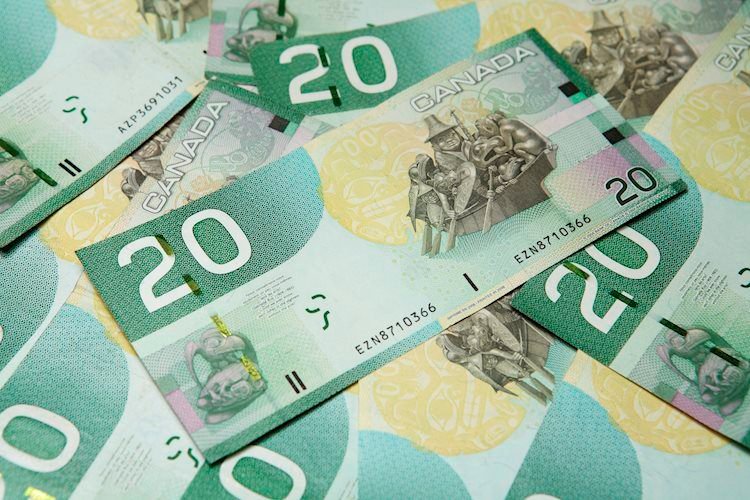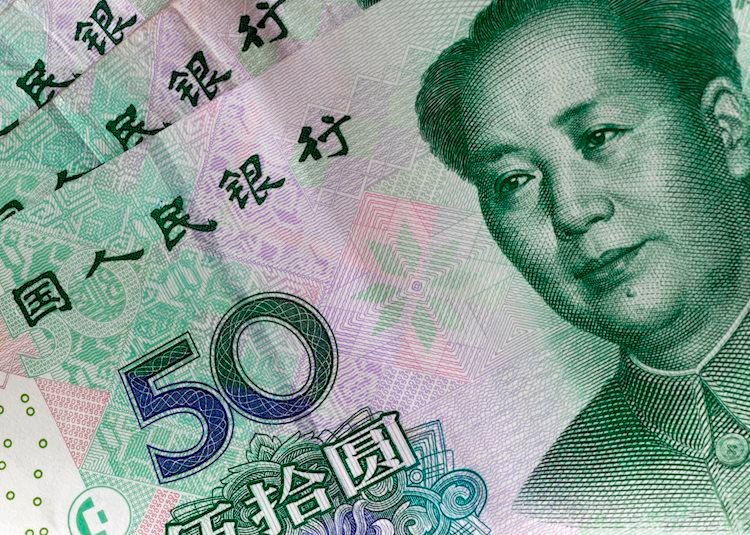- Australian Dollar moves higher after recovering daily losses amid a stronger ASX 200 Index.
- Australia’s equity market strengthens following Friday’s gains on Wall Street.
- US Dollar gained ground on the reduced likelihood of a Fed rate cut in June.
- US Nonfarm Payrolls added 303,000 new jobs in March, surpassing the anticipated 200,000 jobs.
The Australian Dollar (AUD) recovers intraday losses and moves into positive territory on Monday, likely influenced by gains in the domestic equity market. The ASX 200 Index sees upward movement during the week’s opening session, particularly driven by a surge in tech stocks. However, the steady US Dollar (USD) may attempt to constrain the advancement of the AUD/USD pair.
Australian Dollar (AUD) faced challenges following the release of unchanged Final Retail Sales and downbeat Trade Balance data from Australia during the previous week. Notably, Australia reported its smallest Trade Surplus in five months for February, attributed partly to a decline in iron ore exports.
The US Dollar Index (DXY) gained ground on higher US Treasury yields following the release of robust Nonfarm Payrolls data from the United States (US) on Friday. The improved labor market performance has reduced the likelihood of a rate cut in June from the Federal Reserve (Fed). According to the CME FedWatch Tool, the probability of a rate cut has decreased to 46.1%. Traders await US Consumer Price Index data for March scheduled on Wednesday.
Daily Digest Market Movers: Australian Dollar gains ground on improved sentiment
- Australia’s Trade Surplus (MoM) narrowed to 7,280 million in March, data showed on Friday, falling short of the expected 10,400 million and February’s reading of 10,058 million.
- Australia’s Exports decreased by 2.2% month-over-month, contrasting with the previous increase of 1.6%. The nation’s Imports grew by 4.8%, compared to 1.3% prior.
- The US Treasury stated Secretary Janet Yellen’s meeting with China’s Finance Minister Lan Foan, where they discussed the macroeconomic outlook and financial developments in both the United States and China. They also discussed the significant role that the Treasury and the Ministry of Finance can play in maintaining a durable communication channel between the two countries.
- Federal Reserve Bank of Dallas President Lorie K. Logan emphasized on Friday that, in light of the upward risks to inflation, she deems it premature to contemplate cutting interest rates. She stressed the necessity of resolving more uncertainty regarding the economic trajectory before making such decisions.
- US Nonfarm Payrolls (NFP) reported a significant increase of 303,000 jobs in March, surpassing expectations of 200,000 and the previous reading of 270,000.
- US Average Hourly Earnings rose by 0.3% month-over-month in March, meeting expectations. The previous reading was 0.2%. There was an increase of 4.1% on an annual basis, aligning with the market consensus but slightly lower than 4.3% prior.
Technical Analysis: Australian Dollar could test the psychological barrier of 0.6600
The Australian Dollar trades around 0.6580 on Monday. The immediate resistance region is observed around the 61.8% Fibonacci retracement level of 0.6596, coinciding with the psychological level of 0.6600. A breakthrough above this level could potentially propel the AUD/USD pair to explore the area around the major level of 0.6650, followed by March’s high of 0.6667. On the downside, key support is identified around the nine-day Exponential Moving Average (EMA) of 0.6557 and the major support level of 0.6550. A breach below the latter could exert downward pressure on the AUD/USD pair, potentially leading it toward the psychological level of 0.6500.
AUD/USD: Daily Chart

Australian Dollar price today
The table below shows the percentage change of Australian Dollar (AUD) against listed major currencies today. Australian Dollar was the strongest against the Swiss Franc.
| USD | EUR | GBP | CAD | AUD | JPY | NZD | CHF | |
| USD | -0.02% | -0.03% | 0.01% | -0.06% | 0.06% | -0.09% | 0.11% | |
| EUR | 0.02% | -0.01% | 0.02% | -0.05% | 0.09% | -0.07% | 0.12% | |
| GBP | 0.03% | 0.02% | 0.04% | -0.03% | 0.09% | -0.06% | 0.14% | |
| CAD | 0.00% | -0.02% | -0.02% | -0.05% | 0.07% | -0.08% | 0.11% | |
| AUD | 0.06% | 0.05% | 0.04% | 0.07% | 0.14% | -0.02% | 0.16% | |
| JPY | -0.06% | -0.08% | -0.08% | -0.05% | -0.12% | -0.14% | 0.05% | |
| NZD | 0.09% | 0.06% | 0.06% | 0.10% | 0.01% | 0.15% | 0.18% | |
| CHF | -0.10% | -0.13% | -0.13% | -0.10% | -0.18% | -0.04% | -0.19% |
The heat map shows percentage changes of major currencies against each other. The base currency is picked from the left column, while the quote currency is picked from the top row. For example, if you pick the Euro from the left column and move along the horizontal line to the Japanese Yen, the percentage change displayed in the box will represent EUR (base)/JPY (quote).
RBA FAQs
The Reserve Bank of Australia (RBA) sets interest rates and manages monetary policy for Australia. Decisions are made by a board of governors at 11 meetings a year and ad hoc emergency meetings as required. The RBA’s primary mandate is to maintain price stability, which means an inflation rate of 2-3%, but also “..to contribute to the stability of the currency, full employment, and the economic prosperity and welfare of the Australian people.” Its main tool for achieving this is by raising or lowering interest rates. Relatively high interest rates will strengthen the Australian Dollar (AUD) and vice versa. Other RBA tools include quantitative easing and tightening.
While inflation had always traditionally been thought of as a negative factor for currencies since it lowers the value of money in general, the opposite has actually been the case in modern times with the relaxation of cross-border capital controls. Moderately higher inflation now tends to lead central banks to put up their interest rates, which in turn has the effect of attracting more capital inflows from global investors seeking a lucrative place to keep their money. This increases demand for the local currency, which in the case of Australia is the Aussie Dollar.
Macroeconomic data gauges the health of an economy and can have an impact on the value of its currency. Investors prefer to invest their capital in economies that are safe and growing rather than precarious and shrinking. Greater capital inflows increase the aggregate demand and value of the domestic currency. Classic indicators, such as GDP, Manufacturing and Services PMIs, employment, and consumer sentiment surveys can influence AUD. A strong economy may encourage the Reserve Bank of Australia to put up interest rates, also supporting AUD.
Quantitative Easing (QE) is a tool used in extreme situations when lowering interest rates is not enough to restore the flow of credit in the economy. QE is the process by which the Reserve Bank of Australia (RBA) prints Australian Dollars (AUD) for the purpose of buying assets – usually government or corporate bonds – from financial institutions, thereby providing them with much-needed liquidity. QE usually results in a weaker AUD.
Quantitative tightening (QT) is the reverse of QE. It is undertaken after QE when an economic recovery is underway and inflation starts rising. Whilst in QE the Reserve Bank of Australia (RBA) purchases government and corporate bonds from financial institutions to provide them with liquidity, in QT the RBA stops buying more assets, and stops reinvesting the principal maturing on the bonds it already holds. It would be positive (or bullish) for the Australian Dollar.


























